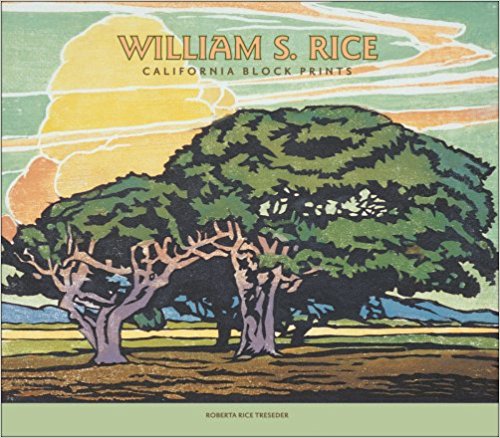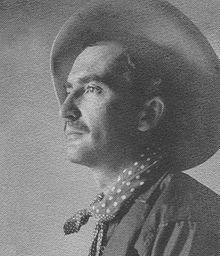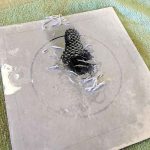Printmaking Inspiration – William Rice
In any art or craft there are people who inspire and motivate us to improve our skills. There are many artists I continually reference – for ideas, skills, tips, inspiration. Some artists have passed on and others are very much alive and printing. I am building a library of books full of pictorial reference of work by my favourite artists; artists who may influence my work, inspire and motivate me, and push me to be a better printmaker. Right now top of mind for me is William Rice.
I want to share printmaking artists with you, alive and dead, whose work inspires my own printmaking practice. Artists I look to in books and online. With this article, I start with introducing North American woodblock printmaker William Seltzer Rice …
William S Rice
William Rice (1873-1963) was an accomplished, well traveled woodblock printmaker and arts educator. He moved to California from Pennsylvania in 1900; arriving at a time when the Arts and Craft Movement was well underway in California. Throughout his career he taught drawing and painting, as well as crafts, including metalcraft and leather working. He was also a freelance writer and illustrator (as an illustrator, he fulfilled to roll of photographer. He would visit ‘scenes’ for a magazine report and illustrate what he saw, to be later published in the article. A craft I think now only used in court rooms, where cameras are not allowed). Rice’s printmaking focused on woodblock printing, and he also produced linoprint and etching printmaking work.
He is best known for his woodblock prints.
Rice’s subject matter was drawn from the natural environment, particularly in and around the areas where he lived in California. California Redwoods, pine trees in Carmel, eucalyptus trees along the Californian coast. He produced beautiful work depicting the sweeping natural landscapes of Yosemite National Park.
Rice held several major exhibitions. He also won awards and wrote two teaching texts. His work lives on in private collections and galleries. It is still possible to purchase his work from galleries in the USA.
I’ll hold onto the dream that I’ll one day I may own my own William S Rice original woodblock print.
Why I love his work
There is so much I love about William Rice’s work … his use of colour and the simplicity of his composition and images, their ability to visually articulate the warmth or chill of the scene, the texture and fresh air in the image he created.
The natural landscape
Much of my own printmaking subject matter is drawn from the natural environment. I feel a strong connection with Rice’s work. In my early 20s, I spent a year in the USA. I saw for myself the landscapes and scenes in the images he printed over 100 years ago. I traveled the Californian coast and Rice’s work evokes my own memories of grand redwood trees and the rugged coastlines I explored. Twisted, gnarled and windswept trees, striking landscapes of forests and vegetation that has survived years of savage weather.
As with most printmaking artwork, I dissect the prints with my eyes – I count the number of colours and layers the printmaker used to create the final image. Did they print with flat colours, or graduated blends of colour? Did they use colour transparency to create additional colour in the final image? I do the same with Rice’s work. I love how he used the white of the paper for strong contrasting areas of his prints – using the white as a colour in its own right. In some work he outlines shapes and areas of colour with a strong and dark shadow keyline, in others he allows the shapes and colours to connect naturally.
His use of Colour
With colour, Rice shows depth and dimension. This is one of the challenges I look to manage with my own relief printing. The way he prints shadows with colour appeals to me. He illustrates the shadows with colour, colour that unless we stop to observe what we are seeing, is convert to a dark almost colourless shape by our brains.
There is a strong graphic quality in Rice’s work. I love his use of colour, the strength of his line work and illustration, and then the subtle tonal qualities he added with blended colours to soften his images.
Printmaking prints look different when viewing the original piece versus and reproduction; I guess all art does. Nothing beats viewing the original artwork – perfect in all its imperfections. Looking at Rice’s work reproduced in books and online is one thing, and a privilege to be able to do so – but I would love to see a printed original with my own eyes. To let me eyes follow the colours, textures and marks on the paper. I hope one day to enjoy that privilege.
Arts and Craft Movement
The Arts and Crafts Movement was an international movement in the decorative and fine arts between 1880 and 1920. It began in Britain, then expanded into Europe and North America before emerging in Japan in the 1920s.
The movement stood for traditional craftsmanship. It called on simple forms, often referencing medieval, romantic, or folk styles of decoration. With a desire to shift away from the industrial development of the time, it supported economic and social reform. The movement was also a reaction against a perceived decline in standards that the reformers associated with machinery and factory production.
Now 100 years on, I feel a strong sense of history repeating itself … a resurgence of ‘makers’ keeping alive and reinvigorating the arts and crafts they feel are at risk of dissolving in a sea of technology and the digital revolution. There is no doubt that technology gives the modern artist advantages and opportunities not previously or widely available, but at what cost?
We are Artists, Artisans, Makers – viva la Arts and Crafts Revolution!
More about William Rice
There are several books with William Rice’s work. I have the “California Block Prints” book in my collection, and hope to acquire more over time. A simple Google search will point you in the right direction for books and available prints. Below are a few links you might find useful or interesting…
 William S. Rice: California Block Prints
William S. Rice: California Block Prints
Hardcover: 80 pages
Publisher: Pomegranate Communications; First Edition edition (May 1, 2009)
Language: English
ISBN-10: 0764948032
ISBN-13: 978-0764948039
Product Dimensions: 8.2 x 9.3 x 0.6 inches
A collection of William Rice images on Pinterest
William S Rice: Art & Life – a biography about Rice, written by one of his granddaughters, Ellen Treseder Sexauer
An article about Rice in Cowboys and Indians magazine
Annex Galleries (Santa Rosa, California) sells William Rice prints (woodblock and lino) and watercolour paintings
William P Carl Fine Prints (Durham, North Carolina) is another source for William Rice original woodblock prints.








Hi Kim, I’ve just found your blog via a search for a gelli plate recipe. Thank you for sharing that!
I’ve enjoyed reading this post. I love Rice’s prints too, the simplicity and the hard-lined graphic qualities are wonderful. I’m also a huge arts and crafts nut 😉
Hi Mary-Anne, thank you for reading 🙂 I just had a re-read of the article myself. I think its time for me to revisit my reference books with his work in it 🙂
Thank you for this wonderful article. I look forward to more. Have a wonderful week. Kim